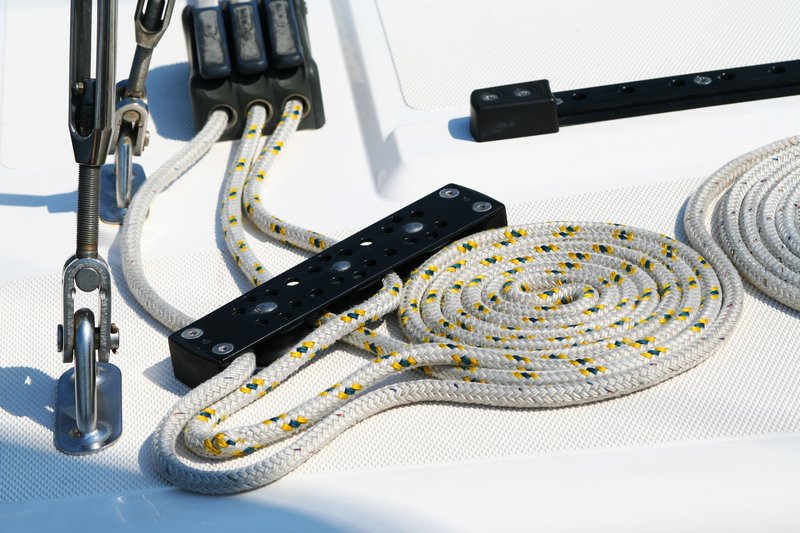Elevate Your Sofa's Lifespan: Long-Term Storage Tips
Posted on 17/05/2025
Elevate Your Sofa's Lifespan: Long-Term Storage Tips
Your sofa isn't just a piece of furniture--it's the heart and soul of your living room. Whether you're redecorating, moving, or simply needing more space, proper sofa storage is crucial for maintaining its beauty and functionality. Without careful planning, storing your couch can lead to irreversible damage such as fading, mildew, or structural issues. But don't worry: by learning how to store your sofa long-term, you can extend its life for years to come.
Why Proper Sofa Storage Matters
Before diving into specific tips, it's important to understand why storing your sofa properly is essential. Sofas are made from a variety of materials--wood, fabric, leather, and metal hardware. Each material is susceptible to different types of damage when exposed to moisture, temperature changes, dirt, and pests. Improper storage can cause:
- Mold and mildew growth on fabric and stuffing
- Cracking and fading of leather
- Rusting of metal parts
- Warping or weakening of wood frames
- Pest infestations that could destroy cushions
A sofa is a significant investment, both in terms of money and comfort. By following expert sofa storage tips, you can shield your couch from these hazards and prolong its lifespan.

Preparing Your Couch for Storage
Effective long-term sofa storage begins with thorough preparation. This is the most important step for ensuring your couch remains in prime condition throughout its time in storage. Here's a comprehensive, step-by-step guide:
1. Clean Your Sofa Thoroughly
Dirt, dust, and spills left on your sofa can worsen over time, leading to stains and odors. The first step is to give your sofa a deep clean before storing:
- Vacuum every surface, including under cushions and crevices.
- Spot-clean stains using manufacturer-approved solutions.
- For fabric sofas, use a fabric-safe upholstery cleaner.
- For leather sofas, use a leather cleaner and conditioner to keep the hide supple and crack-free.
- Let the sofa dry completely to avoid trapping moisture (which encourages mold).
2. Disassemble When Possible
If your sofa can be taken apart, remove the legs, cushions, and any detachable parts. This makes packing and moving easier, and also reduces the risk of damage. Label small parts (like screws) and store them in a sealed bag attached to the main frame.
3. Wrap It Right
Protection during storage is crucial:
- Use moving blankets or furniture pads to protect from scratches and dust.
- Wrap the entire piece in breathable plastic or special furniture wrap (avoid regular plastic as it can trap moisture).
- Do not use tight plastic sheeting, which can promote condensation and mold.
Choosing the Ideal Storage Environment
Your choice of storage facility or location plays a major role in how well your couch withstands the test of time. Here are essential tips:
1. Always Opt for Climate-Controlled Storage
Temperature and humidity extremes are the mortal enemies of stored sofas. Climate-controlled storage keeps temperatures within a safe range (usually between 55?F and 85?F) and maintains low humidity, preventing mold, warping, and cracking.
- Do not store your sofa in a garage, attic, basement, or shed unless they are climate controlled.
- Avoid direct sunlight, which can fade fabrics and leather.
2. Clean, Dry, and Elevated Space
The storage unit or room should be clean and well-ventilated. Place your sofa on a set of pallets or blocks to keep it off the floor. This guards against flooding, moisture, and pests.
3. Pest-Proof the Area
Rodents and insects can quickly turn your long-term sofa storage into a nightmare. Ensure the area is sealed, and consider using natural pest repellents like cedar or lavender sachets around your sofa.
Proper Packing Techniques For Couch Storage
How you arrange and pack your couch in the storage unit can make a world of difference. Here's how to do it right:
1. Avoid Heavy Stacking
Never place heavy items on top of your sofa. This can crush cushions, bend frames, and stretch upholstery out of shape.
2. Position With Care
- Place the sofa upright, as it would be in your living room.
- Leave space around the sofa to allow air circulation and easy inspection.
3. Protect Sofa Legs and Corners
Wrap legs and corners in extra padding or bubble wrap. These vulnerable areas are most likely to suffer nicks or scrapes during moves and storage.
4. Consider Specialized Sofa Covers
Invest in covers designed specifically for sofa storage. These covers are breathable, repel dust and moisture, and add an extra layer of safeguard against accidental tears or stains.
Tips for Storing Sofas by Material
Different sofa materials require tailored approaches during storage. Here's how to care for the most popular types:
Fabric Sofas
- Make sure fabric is completely dry before wrapping.
- Use moisture absorbers like silica gel packs inside armrests and under cushions.
- Check for evidence of insect pests and treat if necessary.
Leather Sofas
- Clean and condition the leather generously before storing.
- Wrap loosely to allow the material to breathe and avoid mildew.
- Never stack anything on a leather sofa--impressions and cracks can form.
Wood-Framed Sofas
- Guard against moisture at all costs--wood can warp or crack easily.
- Wrap all exposed wood in blankets or bubble wrap.
- Store in an area with stable humidity levels.
How to Maintain Your Sofa During Extended Storage
If your sofa will be in storage for months or even years, don't forget about periodic maintenance:
- Visit your storage unit every three months, if possible.
- Remove covers briefly to allow moisture to escape and check for mold or pests.
- Air out cushions and flip them, if feasible, to keep them springy.
- Re-apply leather conditioner or fabric protector annually if required.
Unpacking and Rejuvenating Your Couch After Storage
When it comes time to bring your sofa back home, be gentle during transit and careful when unpacking:
- Unwrap in a clean, dry area to avoid recontamination.
- Vacuum and clean again to remove any dust or storage odors.
- Allow the sofa to 'breathe' and settle back to room climate gradually.
- For leather couches, buff and condition once more.
If you discover any issues, such as odors, stains, or sagging cushions, address them immediately while they're still easy to fix.
Additional Expert Tips for Extending a Sofa's Life While in Storage
- For added security, use sofa storage insurance if available--a smart move for premium furniture.
- If storing for longer than one year, rotate the sofa's position to prevent prolonged pressure on one spot.
- Consider using air purifiers or dehumidifiers within the storage unit for extra moisture control.
- For vintage or antique sofas, consult a professional furniture conservator for specialized care and advice.

Frequently Asked Questions About Long-Term Sofa Storage
Can I store my sofa in a non-climate-controlled unit?
It's not recommended for long-term storage. Extreme temperatures and humidity can cause severe damage to wood, fabric, and leather.
What's the best way to wrap my sofa for storage?
Use pads or blankets first, then a breathable, waterproof cover made for furniture. Avoid wrapping in plastic wrap tightly, as this can trap moisture and lead to mold and mildew.
How do I prevent pests from damaging my sofa in storage?
Choose a well-sealed, pest-controlled storage facility. Place pest repellant sachets (like cedar blocks) around your sofa and avoid storing food in the same unit.
How often should I check on my sofa in storage?
At least every 2-3 months. Regular check-ins allow you to catch problems like moisture buildup or pests before they cause permanent damage.
Conclusion: Give Your Sofa the Storage It Deserves
Your sofa is more than just a seat--it's an investment in comfort, style, and everyday living. Whether you're making space during a renovation, storing extra furniture after downsizing, or saving sentimental pieces, proper long-term couch storage doesn't have to be daunting. By:
- Cleaning and preparing your sofa
- Selecting the right storage environment
- Using professional wrapping techniques
- Maintaining regular check-ups
--you'll ensure your favorite couch remains as inviting, attractive, and comfortable as the day you stored it.
Elevate your sofa's lifespan--treat it to careful, thoughtful storage, and you'll enjoy its comfort for decades to come! Keep these comprehensive, expert storage tips in mind and your sofa will always be ready to welcome you home.







